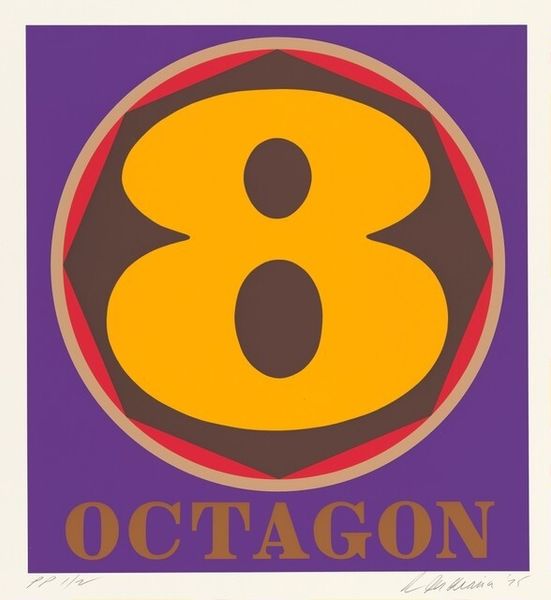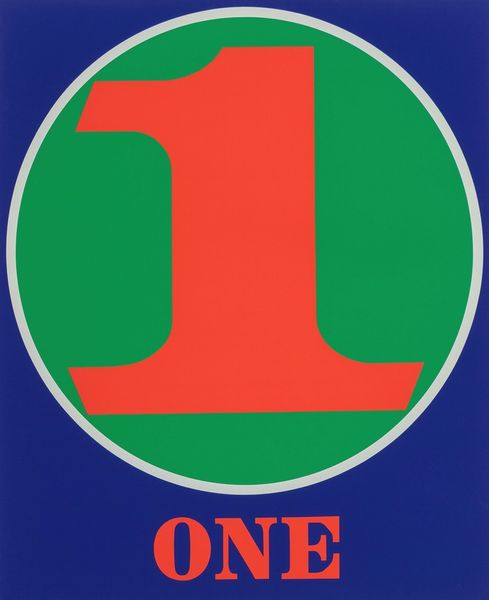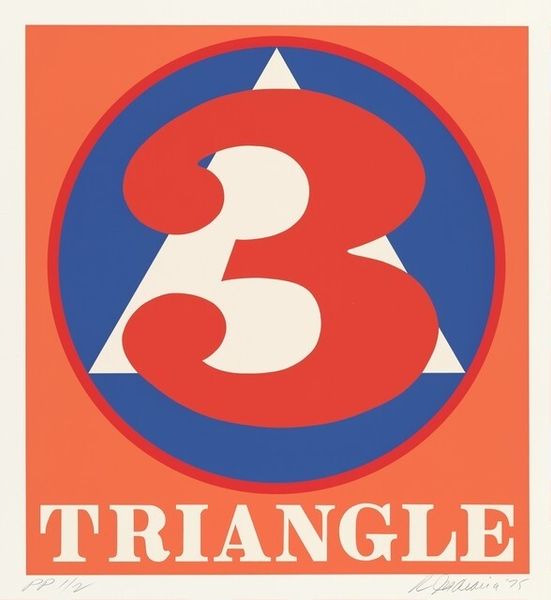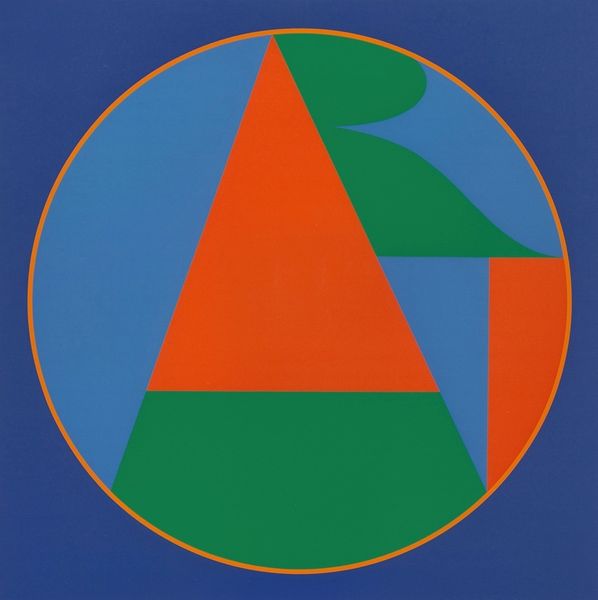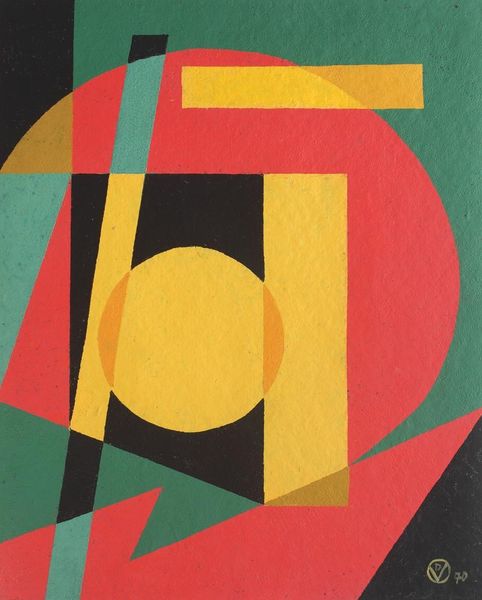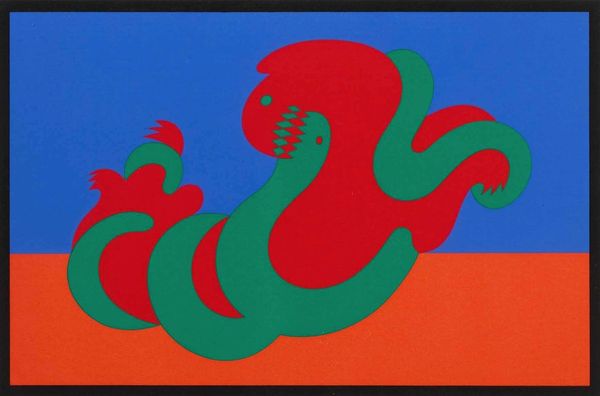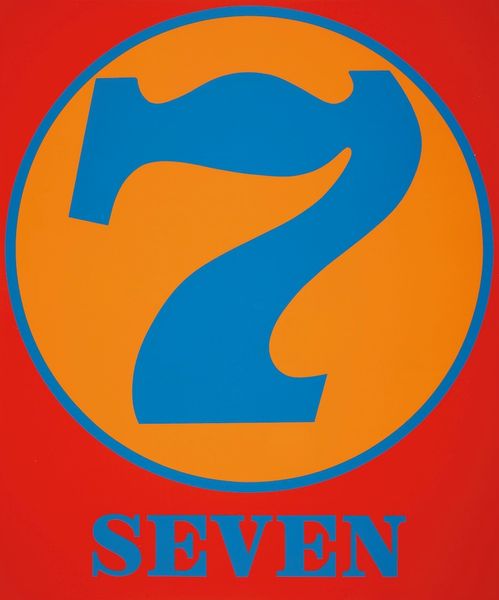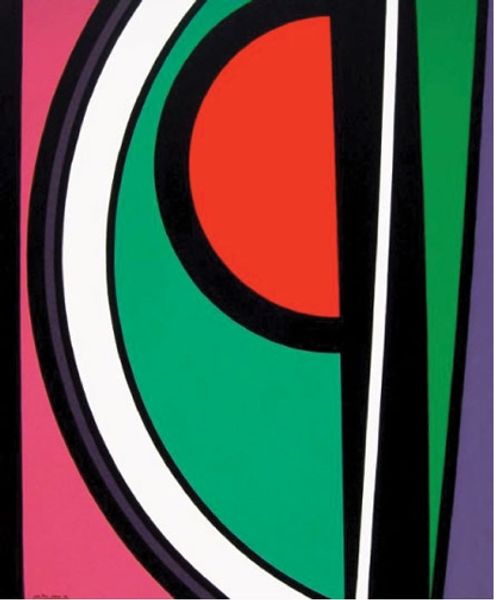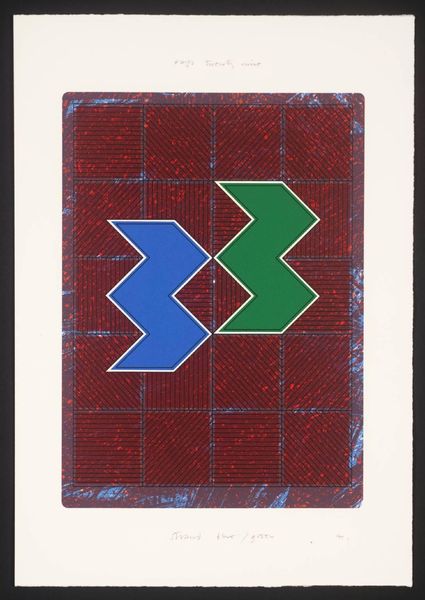
Dimensions: image: 60.96 x 55.88 cm (24 x 22 in.) sheet: 78.74 x 71.12 cm (31 x 28 in.)
Copyright: National Gallery of Art: CC0 1.0
Editor: This is Robert Indiana's "Hexagon," a print from 1975. The use of geometric forms and flat, bold colors makes it very striking. I’m drawn to the way the shapes interact, specifically the interplay between the hexagon, the implied circle, and the numeral "6" nestled within it all. What strikes you most about the visual elements in this piece? Curator: Note how Indiana focuses attention through precise arrangement of basic visual components, avoiding historical, narrative or subjective content. The work emphasizes the properties and impact of these compositional techniques. The lines generate complex, balanced relationships, in spite of using a very restricted range of forms. It explores pure formalism by investigating color, line, shape, and typography. What is particularly intriguing, for me, is how each block of color creates another shape using negative space, without relying on surface illusion. Do you agree? Editor: I do. The relationship between positive and negative space creates movement within a seemingly static image. Do you think the flat rendering flattens the pictorial depth of this two-dimensional plane? Curator: Precisely. The picture plane reinforces its inherent flatness with this rendering style, a technique that defies classical ideas of illusionistic painting. This method foregrounds design itself. Indiana seems focused solely on pure shape divorced from any overt context. Editor: So by reducing the subject to its most essential shapes, Indiana elevates their prominence. It feels like it reveals their importance to the underlying structure. Curator: Precisely, his choice in foregrounding design elements creates this dynamism in the aesthetic arrangement itself, allowing these properties to engage in dialogue with one another. Editor: I see it so clearly now. This perspective offers such a refreshing lens. Thanks so much for your insight. Curator: A pleasure. I am happy we could further explore the formal dynamics within this work today.
Comments
No comments
Be the first to comment and join the conversation on the ultimate creative platform.
